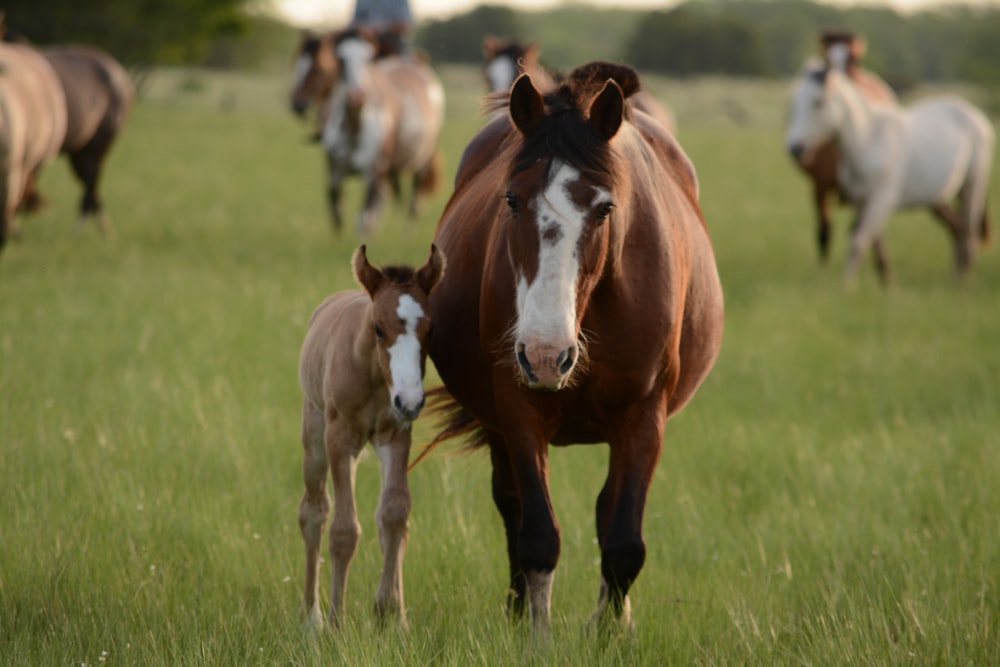Last Updated on September 17, 2020 by Allison Price
What Is A Whorl, Swirl or Cowlick?
A swirl or whorl, as it is also called, is a distinctive pattern in an animal’s hair layers. It often revolves around a center with the design of whirling, flexible spokes. The Whorls’ purpose is to determine the temperament of a horse. Flighty and spooky horses appear to get several whorls in the body. While few others are calm and reserved horses.
Horse Swirls are equal to human fingerprints. It has no same patterns, they are like stamps marking the unique identity of each horse. Horses are in a variety of breeds and swirl patterns help in the identification of a horse’s breed. One example of a variety is the Arabian Horse Association. This includes a record of swirls as identification for racing. Another one is the American Quarter Horse Association. This variety uses swirls as an identification tool for solid colored horses. When you register a thoroughbred, it is part of the process to record the swirl patterns on the face and on both sides of the neck.
HORSE WHORLS BEYOND FOLKLORE
Man has observed the world around him since ancient times, looking for signs and clues. Horses have been a major fascination since they were first painted on the walls of caves, back in 30,000 BC. There are so many old wives’ tales about horses including whorl patterns. Some stories said that the whorl pattern on your horse’s forehead is the gateway to their soul.
Different ancient tribes have a lot of superstitious beliefs on horse whorls. American Indians believed they could predict the mood of a horse by the whorl on its head. Bedouin tribesman valued horse hair whorls. As for them, it predicts personality and performance traits in horses 2,000 years ago. Also, according to tradition and mythology, a whorl on the cheek is a symbol of debt and disaster.
WHORLS LOCATION

You can find the whorls in different areas including the stomach, face, poll, neck, chest and flanks. Sometimes, you can spot then in random and odd parts on the body of your horse.
WHORLS PATTERN
People have conducted observations about the meaning of a whorl on a horse’s face. These observations concluded that this placement tells us a lot about their personality.
Facial Swirls
1. A single swirl above or between the eyes:
This pattern and position are the standards displayed by the majority of the horses. This is according to some studies and in my observations. It indicates a horse with an uncomplicated nature, but there are variations. Sometimes swirls are set a little to one side or the other.
The horse will appear to be a little more difficult but still trustworthy, with swirls set to the left. Horses with a swirl set a bit to the center right may be less friendly. Those with the pattern in the middle or on the left are friendlier. Hence, these swirls are less indicative of character than the more complex patterns.
2. A single swirl that is inches below the eyes:
Over 80% of horses with this configuration are imaginative and intelligent. They like to amuse themselves and can be quite a nuisance. They can turn on water faucets and open stall doors to free themselves. Some can untie complicated knots and find ways to escape the pasture. These horses are of above-average intelligence and interesting characters to work with.
3. A single, long swirl that may be between or extend below the eyes:
This usually indicates that a horse is friendly and enjoys relating to people. Over the past 20 years, there has been a recurring observation. Since horses with this swirl are often friendly, there are cases that some of them can be the opposite. The reason for this is that they might be in pain or abuse.
For a simple explanation:
- If the whorl is up high, above eye level, people expect the horse to be very smart, energetic, and outgoing. An extrovert.
- If located to the right, this shows a right-brained horse. These horses are reactive, emotional, nervous, and defensive.
- A whorl placed below eye level means an introvert horse. Sometimes considered lazy or stubborn, smart, bored, and can be distrustful. It’s not sure that there’s a mule that didn’t have a low whorl.
- A whorl lying on the left side of the face means a left-brain horse. These horses are often confident and willful. The farther a whorl is from the center the more pronounced the effect will be.
- A center whorl is the most common and doesn’t tell us a whole lot. We need to look at the shape of the head, neck, eyes, all the other hints we get with that sort of whorl.
It gets even more complicated when we get in two or more whorls from the horse. It can show tendencies from two very distinct types of brain. Stacked whorls, one over the other, depict a horse is an introvert and an extrovert.
- Side by side whorls mean that the right brain is reactive and hot. And the left brain is nonreactive and confident.
Whorls can pop up on the face at some unexpected locations. Some will appear on the sides of their jaws, others have it on their heads, and some on temples. Wherever there is a whorl there is some point of focus.
Whorls can pop up on the face at some unexpected locations. Some will appear on the sides of their jaws, others have it on their heads, and some on temples. Wherever there is a whorl there is some point of focus.
CAN IT PREDICT THE HORSE’S TEMPERAMENT?

The answer to this question is still not clear. Most horsemen believe it can, while some think it can’t. There is a striking fact that can change your opinion. If you raise a horse with gentleness, can affect its character. In such a way that its true temperament will be masked by experience. But, it’s only masked and not changed by the experience. And if you expose an animal to novelty, his true temperament shows. That’s because the neuro system reactivity is genetically based.
THE STUDY OF WHORLS
Many horsemen say that studying whorls useful. Because it can determine clues of the horse’s personality and performance. Although considered a pseudo science, the study of whorls can aid in the understanding horse’s nature. It may help owners choose the best horse partner too. They can choose an appropriate one and reject the unsuitable. This can save them time, money and emotion. In short, whorls can lead us to a deeper understanding and acceptance of our horses.


